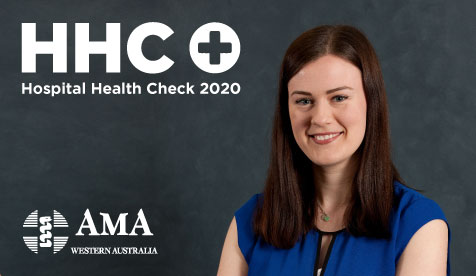

Blog

Hospitals need to get the basics right
Monday November 16, 2020
This year, the Hospital Health Check (HHC) has revealed an area that all health services can significantly improve on – rosters, overtime and payslips.
These basic aspects of employment can significantly impact the experience of doctors in training (DiTs) and can become the ultimate deciding factor for people to stay or leave a particular health service.
Unfortunately, based on the statistics this year, a significant number of DiTs report their rosters do not match their hours worked. The expectation and reality of actual hours is too often substantially different and can lead DiTs to the point of exhaustion and burnout.
For example, many DiTs will have start times of 8am but it’s an unspoken expectation that the DiT will arrive at 7:30am (or earlier) to prepare notes, check results, consent patients etc. before the morning ward round, which starts at 8am.
The same principle applies to handover times that are not enforced – which can mean a DiT has to remain back sometimes hours after a shift ends. This is time that is essential for patient safety and continuity of care and needs to be protected, so DiTs can leave their workplace at an acceptable time and have appropriate breaks between shifts.
Over the course of a term, these hours add up to a substantial amount of money and I would implore all hospitals to include them in the DiT rostered shift start and end times, as well as encourage DiTs to apply for overtime for these hours worked – irrespective of what you have been told about overtime not being paid in certain departments.
This is because hospitals need to be informed and have a realistic idea of how many hours their DiTs are working to identify gaps in workforce and accommodate areas of significant clinical need.
As a Medical Administration trainee, rostering is also something I have been heavily involved in improving for DiTs by identifying poor rostering patterns with inadequate breaks and rewriting them to be fairer, equitable and safer. Often the best rosters I have seen are those written or at least approved by clinicians working in the respective areas who understand the demands of the roles undertaken by DiTs – something I strongly feel all hospitals should be doing, if they are not already.
Another theme identified by the HHC was that some medical workforce units were not getting rosters out to DiTs until the absolute minimum of 14 days prior (and often anecdotally, after that) – despite the AMA Agreement stating that all rosters should be provided 21 days or more in advance. This is regardless of the fact that they are using the same roster templates each term, with often minimal changes required, except the names of the new DiTs.
Consequently, this leads to significant frustration amongst DiT cohorts who are trying to plan their lives amidst the demands of a 24/7 roster. It is something easily rectifiable to improve the overall feeling of lack of control in this current climate.
Probably the most disappointing statistic within this section of the HHC referred to payslips, particularly in government run health services. The highest rating for a public hospital was 15 per cent correct – yes, that was the highest percentage achieved! So, for the majority of DiTs in public sector hospitals, 85 per cent or more of their payslips were incorrect.
The introduction of electronic payslips has probably made errors more easily identifiable than previously mailed payslips. Yet unfortunately, the process for rectifying these errors is still arduous and time consuming for all involved. There needs to be a streamlined electronic process for sorting these payroll issues (not via a HSS email than can take up to two weeks to get a response), so that DiTs can receive their wages in a more timely fashion.
With fail grades almost across the board, there are many areas in rostering, overtime and payslips for hospitals to improve on for 2021.

